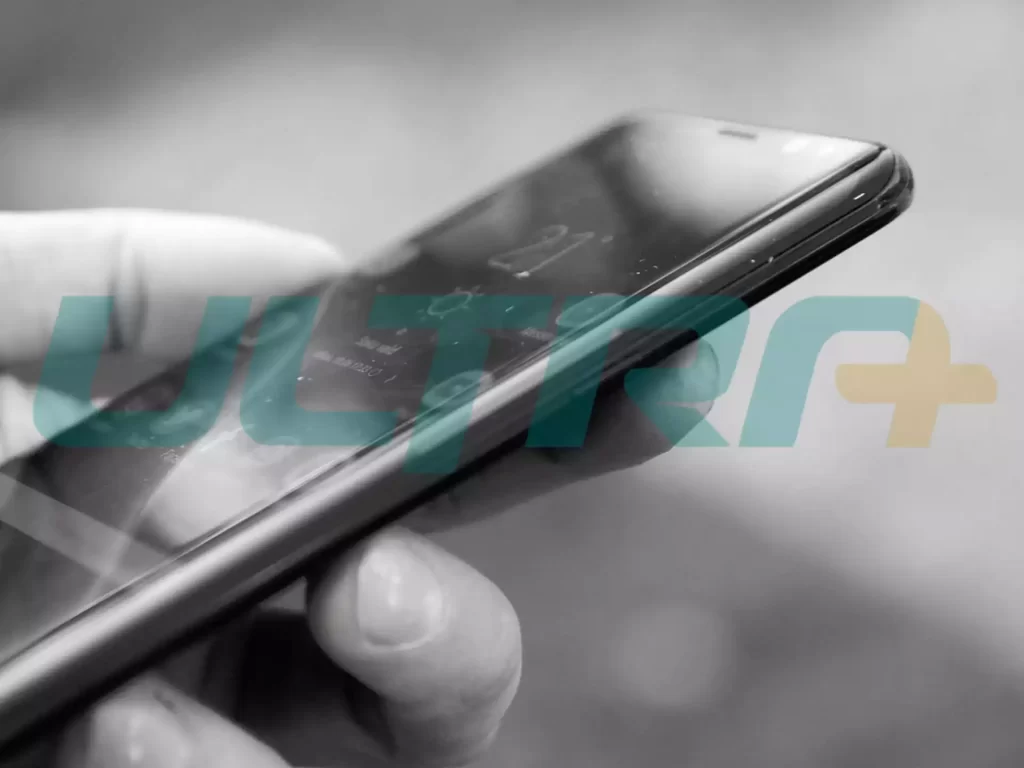

As refurbished tech makes its case, scout a good deal but be wary of red flags
AS REFURBISHED TECH MAKES ITS CASE, SCOUT A GOOD DEAL BUT BE WARY OF RED FLAGS

Contact us at the Consulting WP office nearest to you or submit a business inquiry online.
To brighten or clean up. That’s how the Oxford English Dictionary defines “refurbish”. This approach is finding increased relevance for personal tech purchases. That’s because of two elements a refurbished, or renewed, tech purchase can tick off. Hunt for value, and aspiration. With online sales as a preferred route and special focus from platforms including Flipkart, Amazon, Cashify, ControlZ and ReFit Global, India’s refurbished tech market is set to boom, growth spearheaded by smartphones.
It is no surprise that tech companies are noticing this transition too, and speeding efforts to position refurbished products in parallel with regular portfolio of sparkling new tech that’s on sale.
India is HP’s first market with a refurbished PC initiative, and there is hope this will provide a boost to expand to more countries. The focus is on notebooks, or laptops, for retail customers as well as businesses. Buyers can choose to spread the cost of buying over a predefined duration, as a subscription.
“It’s a game-changer for those facing financial constraints, opening doors to PC usage. Students gain educational resources, small enterprises enhance productivity, and start-ups find a cost-effective tech solution, all contributing to a more digitally inclusive society,” says Gurpreet Singh Brar, Vice President, HP India. The company intends to bring more products within the refurbished and subscription bracket, this year.
But while most gadget categories are still catching on, smartphones rule the refurbished, or renewed, market. “Smartphones are the leading category in the refurbished market, with robust demand,” says Yug Bhatia, CEO and founder of ControlZ.
Saket Saurav, who is co-founder and CEO of ReFit Global, opines that since 2020, smartphone prices have been consistently on an upward curve as new phone buyers demand more features and performance. “It created a gap in the lower-end market and this boosts the appeal of second-hand (or pre-used) smartphones,” he says.
Apple is popular among renewed phone buyers, as are Xiaomi, OnePlus, Samsung and Vivo.
“An intriguing trend is that premium high-end smartphones continue to drive considerable demand in the refurbished market. The sales data reflects a growing interest in these sophisticated devices,” Saurav points out.
ControlZ’s Bhatia notes that Apple’s inspirational element is perhaps best reflected by the fact that older iPhones continue to sell well. “Right now, the lower-end models—the iPhone 7 and 7 Plus—are the best-selling and dominate the market for us. Despite them being 6-7 years old, these models continue to have great popularity with people of all ages,” he says.
India led the global refurbished smartphone market in 2022 with 19% year-on-year growth, according to research firm Counterpoint. In the same period, Apple cornered 49% share of the market; Samsung following through with 26% share. The 2023 numbers are awaited.
Globally, China leads the refurbished smartphone space and according to latest data from Market Research Future, India is now the fastest growing market globally. The worldwide refurbished smartphone market is projected to grow from $60.3 billion in 2023 to $154.7 billion by 2032.
Need for a bigger value umbrella
Though phones dominate for now, there is a concerted effort from tech brand, ecommerce platforms and service partners to expands the scope. Asus’ approach towards refurbished is more inclusive, which perhaps sets an example for more brands to follow, with presence across physical stores and on the e-store. Called ‘Select Store, a fourth such store is lined up to open its doors in Hyderabad, this month.
It’ll become Asus’ fourth such physical retail presence, joining stores in Delhi, Kolkata and Mumbai.
That provides a boost to the company’s renewed or refurbished portfolio that already includes consumer laptops, gaming PCs, creator series laptops, desktops as well as a wide range of peripherals. “With the increase in the number of individuals opting for refurbished laptops in the city, we wanted to build an avenue that extends products that have undergone robust checks to ensure that they can access premium quality laptops and PCs,” says Arnold Su, Vice President for the Consumer & Gaming PC, System Business Group, at ASUS India.
Su asserts that any computing device or accessory that goes on sale as part of the refurbished products line, are “products that have undergone robust checks”. These are also backed with a one-year warranty. That’s the sort of reassurance that would help buyers make a bet on refurbished gadgets.
Potential pricing advantage, for those searching for value, is significant. Here’s an illustration of the ROOG Zephyrus G15 GA503RM-HQ111WS gaming laptop powered by the AMD Ryzen 6 chip with 16GB RAM, 1TB solid state drive and Nvidia’s RTX 3060 graphics. Buying this new, costs around ₹1,10,990 from the Asus e-store. The refurbished option is priced at ₹77,693. That is a saving of more than ₹30,000 if the refurbished option is acceptable to a buyer.
Last year, e-commerce giant Flipkart confirmed that Yaantra, an electronics re-commerce startup they acquired in early 2022, is tasked with refurbishing devices they receive when customers exchange an old piece of tech, for a new one. The plan is to cover electronic devices including TVs, appliances and phones.
But how affordable are renewed gadgets, compared with box-sealed counterparts? “Opting for a refurbished product can be a budget-friendly choice, offering savings ranging from a modest 30% to a substantial 70%. It’s a sensible option that allows you to acquire reliable gadgets without putting too much strain on your wallet,” says ReFit Global’s Saurav.
Amazon’s Renewed is their platform for refurbished and ‘like-new’ products. It sees active participation from brands including Lenovo, OnePlus and Samsung. For instance, a refurbished Samsung Galaxy S23 Ultra can be had for as little as around ₹92,000 depending on previous owner’s usage – a new phone costs ₹1,24,999 onwards.
What you see is what you get?
A refurbished smartphone, tablet or computer peripherals, for instance, can save you considerable money compared with buying new. For a predefined budget, renewed choices often open the budget for a more capable product than the one they were considering, if bought new. Whilst renewed or refurbished gadgets can save money and prevent a gadget from prematurely ending up in a landfill, there’s a checklist to be ticked off before splashing the cash.
Often, it is not easy to tell a refurbished phone which may have received necessary maintenance and swapped parts (such as a new battery, perhaps), from one that’s simply pre-owned and retains the wear and tear from previous usage. ControlZ claims “each device is meticulously disassembled, diagnosed, and renewed” while ReFit Global talks about “47 checks on each device”, as part of the process.
“While it is possible to physically check for wear and tear, you can know how old the model was, when was it first sold, which country it belong to, and many more things. Unless a phone prompts you, it is difficult to know if it has been refurbished. For example, if you change the battery or display on an iPhone which is not original, it will give you a warning,” says ControlZ’s Bhatia.
Often, platforms selling renewed or refurbished gadgets can often provide some guidance. Take ReFit Global’s categorisation, based on various factors defining condition.
“Yes, these refurbished gadgets can be considered “like new” in the true sense, both in terms of reliability and user experience. Refit offers three categories for their refurbished phones: superb, very good, and good. Functionally, they are indistinguishable, with the differences lying primarily in aesthetics,” says Saurav. For simplicity, the ‘superb’ category consists of phones with minimal or no scratches, ‘very good category’ may have minimal scratches, and ‘good’ category could be phones with a dent or two (often resulting from rough use, such as a fall).
Prices also change depending on condition and categorisation. And therefore reliability as well as longevity. At this point, it is important to be reminded of a standard rule of life – if it sounds too good to be true, it probably is.
No matter how reliable a refurbish seller may be, there are always variables and unknowns in the process. Quality of repairs, parts swapped (whether they’re company certified or not, for instance), and whether even a thorough refurbish was even done, can never be transparent to a buyer. In some cases, even to the seller, if another partner has handled the repairs process.
Apart from searching for a good deal on a phone that may have otherwise been too expensive if bought new, warranty and intuition should figure prominently on your list of priorities. If a phone, despite claims to have been refurbished completely, doesn’t feel right to use or to hold, avoid. On a refurbished television, looking out for uneven panel lighting or dead pixels are red flags. A warranty and returns policy can be useful in getting support in case things go pear shaped within a certain period after purchase.
